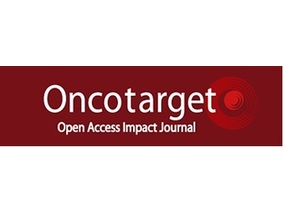
“We describe two patients with a confirmed diagnosis of high-grade gliomas (grades III/IV), both presenting with O6-methylguanine-DNA methyltransferase (MGMT) methylated and isocitrate dehydrogenase (IDH-1) mutated who, after subtotal resection, were submitted to chemoradiation and followed by PCV, a multiple drug regimen (procarbazine, lomustine, and vincristine) associated with cannabidiol (CBD).
Both patients presented with satisfactory clinical and imaging responses at periodic evaluations. Immediately after chemoradiation therapy, one of the patients presented with an exacerbated and precocious pseudoprogression (PSD) assessed by magnetic resonance imaging (MRI), which was resolved in a short period. The other patient presented with a marked remission of altered areas compared with the post-operative scans as assessed by MRI.
Such aspects are not commonly observed in patients only treated with conventional modalities. This observation might highlight the potential effect of CBD to increase PSD or improve chemoradiation responses that impact survival. Further investigation with more patients and critical molecular analyses should be performed.”
https://www.ncbi.nlm.nih.gov/pubmed/30713832
“These observations are of particular interest because the pharmacology of cannabinoids appears to be distinct from existing oncology medications and may offer a unique and possibly synergistic option for future glioma treatment.”
https://www.frontiersin.org/articles/10.3389/fonc.2018.00643/full


 “Good pain management in children, especially those at end of life, is a crucial component of palliative medicine. The current review assesses some of the new and/or innovative ways to manage pain in children. The article focuses on some recent medications/pharmaceutical options such as
“Good pain management in children, especially those at end of life, is a crucial component of palliative medicine. The current review assesses some of the new and/or innovative ways to manage pain in children. The article focuses on some recent medications/pharmaceutical options such as 
 “As the legalization of medical cannabis continues across the USA, oncology care providers will be increasingly asked to provide recommendations regarding its use in the cancer setting.
“As the legalization of medical cannabis continues across the USA, oncology care providers will be increasingly asked to provide recommendations regarding its use in the cancer setting.


 “Parkinson’s disease (PD) is a chronic neurodegenerative disorder characterized by motor symptoms such as bradykinesia, rest tremor, postural disturbances, and rigidity. PD is also characterized by non-motor symptoms such as sleep disturbances, cognitive deficits, and psychiatric disorders such as psychosis, depression, and anxiety. The pharmacological treatment for these symptoms is limited in efficacy and induce significant adverse reactions, highlighting the need for better treatment options.
“Parkinson’s disease (PD) is a chronic neurodegenerative disorder characterized by motor symptoms such as bradykinesia, rest tremor, postural disturbances, and rigidity. PD is also characterized by non-motor symptoms such as sleep disturbances, cognitive deficits, and psychiatric disorders such as psychosis, depression, and anxiety. The pharmacological treatment for these symptoms is limited in efficacy and induce significant adverse reactions, highlighting the need for better treatment options.